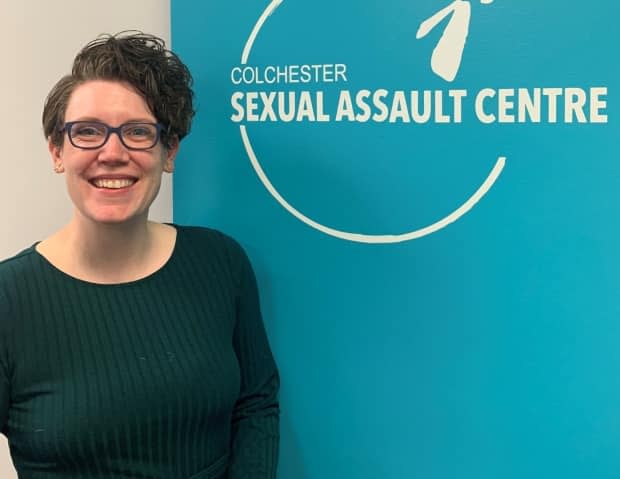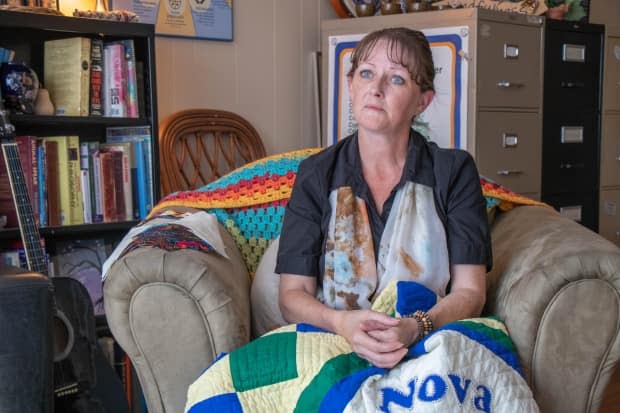How human traffickers use 'corridors' to isolate victims, evade police

For the first time, advocates have a better understanding of how human traffickers use transportation routes across the country, including between Halifax and Moncton, N.B., to evade police and confuse and isolate their victims.
A national study released Monday by the Canadian Centre to End Human Trafficking details how trafficking corridors between cities are being used to exploit young women and girls. Many are forced to work as escorts or in strip clubs.
Sara-Lynne Lantz, a trauma counsellor with the Colchester Sexual Assault Centre in Truro, N.S., has worked with survivors of human trafficking in Nova Scotia who've been moved as far away as Toronto.
"They were terrified. They didn't even think they were going to actually get out alive … they didn't even really know which city they were in at that point," Lantz said.
"To even try to just get out and get a bus, you can't even do that when you don't have any money or debit card or anything like that, so it's incredibly scary."

The report's findings don't surprise her— advocates have known anecdotally for many years that the Trans-Canada highway between Nova Scotia and New Brunswick is a major human trafficking corridor.
But according to the centre, this is the first study of its kind to collect data from police and service providers to better understand how these corridors are used.
The study found that in some cases traffickers rent multiple cars along their routes using fake IDs so it's harder for police to track them.
"One of the things that, you know, took me aback is really how prevalent this is and how it's happening in all communities, big and small … anywhere where there's access to the internet and a highway," said Julia Drydyk, executive director of the Canadian Centre to End Human Trafficking.
The Halifax-Moncton corridor
The stretch of the Trans-Canada Highway between Halifax and Moncton was the most frequently mentioned corridor in Atlantic Canada, according to the report.
Researchers found that traffickers go to Moncton to access the commercial sex markets in strip clubs, for example, or to recruit young women and lure them back to Halifax. Victims can also be taken to larger centres such as Montreal and Toronto.
Truro is considered a hub for human trafficking due to its location between Halifax and Moncton and rates of poverty, addiction and lack of affordable housing, said the executive director of the Colchester Sexual Assault Centre.
"Unfortunately, Truro is uniquely positioned to be one of those key areas that trafficking and exploitation takes places," Jamie Matthews said.
Traffickers use corridors for three main reasons, the report found — to make money, to evade detection by moving across jurisdictions and to keep victims isolated.
Margaret Mauger, the co-founder of the After Trauma Empowerment Network, said she worked with one survivor who had been moved all over Canada.

Moving victims on a regular basis allows traffickers to exert further control over them, Mauger said. She added that while victims are often young women and girls, she's also worked with young men and transgender people who've been exploited.
"They live in fear of trying to access help," she said. "Not being in a community long enough to even know what supports or resources might be available to them, and there's very few resources in our country to assist people that are looking to exit trafficking and exploitation."
Survivors face stigma
In 2020, six women and girls who had experienced some form of human trafficking reached out to the Colchester Sexual Assault Centre, a quarter of the centre's caseload at the time.
The stigma of human trafficking can last even when survivors escape exploitation, Lantz said.
In small communities like Truro, it can be hard for people exiting human trafficking to be accepted, and some end up returning to harmful situations in order to support themselves, she said.
Lantz said helping survivors requires a host of supports, from counselling, to dental, to removing tattoos that are used by traffickers to identify victims.
The new data about corridors will be a helpful tool to educate young people about how traffickers operate, she said.
"We have a really clear national evidence — look at these maps —for how easily they can move you and why they move you from city to city to city to city across provinces. I think it's really, really important," Lantz said.
More police co-operation needed
One of the recommendations in the report by the Canadian Centre to End Human Trafficking is to create more law enforcement teams that can work across borders and jurisdictions.
"We also need to make sure that law enforcement are trained in every jurisdiction across Canada to be able to identify and apply trauma-informed responses to human trafficking," Drydyk said.
It's really important that Canadians understand that this is a Canadian issue. - Julia Drydyk, Canadian Centre to End Human Trafficking
She said some people still believe that human trafficking is a problem in other countries or that it doesn't affect Canadians.
"It's really important that Canadians understand that this is a Canadian issue," she said, "that it's largely Canadian women and girls being exploited and that this is happening in folks' backyards, but it's also happening on those mainstream transportation routes that as Canadians, we use all of the time."
Where to go for help
In January, the Elizabeth Fry Society in Truro created the Gate Outreach line. It's staffed by a team from the organization until 1 a.m. most days and can be reached at 1-833-625-GATE or gate.efry@gmail.com
People can also contact the Colchester Sexual Assault Centre on Facebook or at 902-897-4366.
The Canadian Human Trafficking Hotline is available 24/7 and can be reached at 1-833-900-1010.
MORE TOP STORIES
